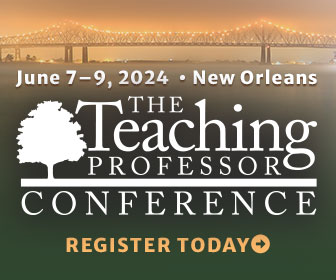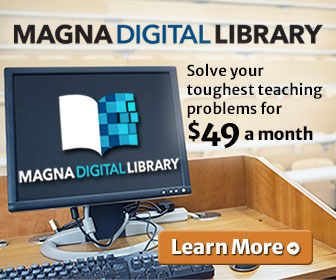At both the beginning and end of each day, it is important to remember that there are only so many options for designing and delivering distance education courses that comply with copyright and fair use law. If I wanted to give someone the short version of how to think about what that means, the following is what I would recommend. It hits the highlights. It is doable. It avoids major pitfalls. It is not overwhelming. The basic choices boil down to these six:
- Do it yourself
Remember that copyright law gives a copyright owner rights in the expression of an idea, not rights in the idea itself. So, you can always create your own materials giving appropriate credit for the idea by citing the original source to prevent plagiarism problems. Particularly if you are a faculty member who works in an environment in which you own the copyright to works you create for your courses, doing it yourself can make sense—if you have the time. If you own the copyright to your materials, you can use them in any way you wish. Though not required by law, it is advisable to place a copyright notice on your work if for no other reason than pride of authorship. If you choose to make them available to others for their use, utilizing a Creative Commons license and/or posting to an open access site may interest you. Remember that you can exercise fair use by “transforming” someone else's original.
- Open access resources
As more and more institutions are encouraging or requiring faculty members to make some of their work available on an open access basis, these resources offer no-cost materials for students and faculty alike. Merlot.org (Multimedia Educational Resource for Learning and Online Teaching) offers teaching materials targeted to higher education audiences. Similarly, the Directory of Open Access Journals (DOAJ.org) maintains a listing of academic journals published using an open access model. Remember that open access materials are not the same as public domain materials. Most of the time, someone still owns the copyright but has chosen to make them available via an open access outlet.
- Commercial textbooks and other educational products
Educational publishers are not going away any time soon. One advantage to using commercially developed educational products is that the identification and selection process tends to be less labor intensive. And, once you identify materials that suit your purposes, they often are accompanied by supplementary teaching materials that might be useful. Nevertheless, everyone knows about the high prices of textbooks and the corresponding pressure to reduce the financial burden on students. When using commercially created educational materials, students must purchase materials created and sold for student use; faculty members cannot lawfully reproduce and distribute such works.
- Public domain works
The most common types of public domain works fall into one of two categories: the copyright expired or the work was not eligible for copyright protection in the first instance. No one owns the copyright to public domain works so they can be used by anyone for any purpose. There are numerous “copyright duration charts” available online to assist you in determining whether a copyright has expired. Works created by the federal government are not eligible for copyright protection and may be used by anyone. Similarly, things like facts, formulas, and scientific theories and methodologies are not eligible and cannot be owned. Obviously, this is more useful in some fields than in others.
- Library resources
Libraries provide a wealth of resources that can be lawfully utilized in both face-to-face and traditional online classes. Enrolled students who are part of the campus community have access to the materials and faculty members can incorporate such resources into their courses. The manner in which this is done is a function of a number of variables. First, it must be done in a manner consistent with institutional policies and licensing agreements. Second, it must be done in a manner consistent with applicable law—and this will vary depending on the type of materials being used. For example, the rules for streaming video and linking to an electronic journal article are not identical. Your librarians can help you navigate this terrain. Having said all of that, remember, you can lawfully use these materials in a manner consistent with the rules of fair use and transformative uses.
- Personal copies
Lawfully using materials personally owned by a faculty member is a bit different. Generally, because of specific provisions in the copyright statute, while a faculty member can bring a personally owned copy of a video to campus and show it in a face-to-face classroom, that same faculty member cannot take that same personally owned video and have it streamed to students in the online version of the same class. Yes, it is true that there are multiple levels on which that doesn't make sense—but the rules are the rules and I am doing my best to describe them—not endorse (or condemn) them. For text-based materials such as books and journal articles, if the rules of copyright and fair use permit their use in a face-to-face setting, it is permitted online too. And, like library resources, you can lawfully use these materials in a manner consistent with the rules of fair use and transformative uses.
As you read through the options, I suspect that many of you will find that some are more useful to you than others. For example, because my primary field is law, I can utilize many legal resources that are in the public domain. There are a lot of legal materials that fall into that category. For others of you, this will not be the case. Maybe you are in a field that has an extensively developed collection of open access materials that are useful to you. Maybe you are in a specialized field that pretty much limits you to doing it yourself, or utilizing commercially produced textbooks, or library and personal resources. While the type of materials available along with the terms and conditions of their use fluctuates, my goal is to assist you in navigating the maze by helping you differentiate between the forest and the trees. If you begin with a general conception of the options available to your discipline and purposes, you can make more informed choices more efficiently.
Linda K. Enghagen is a professor in the Isenberg School of Management at the University of Massachusetts-Amherst. 


